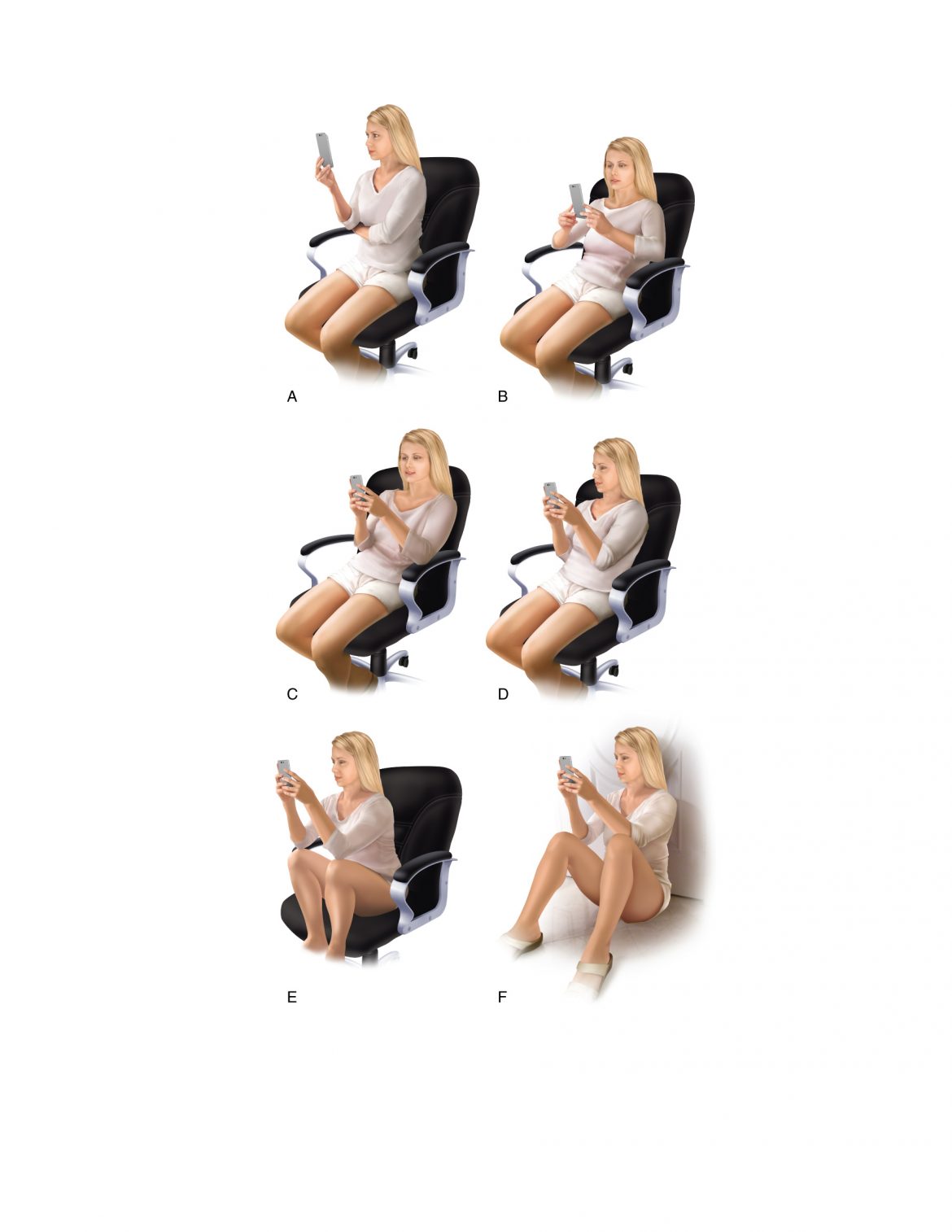Ten Common Dysfunctional Postures and Injuries caused by Smart Phone Use
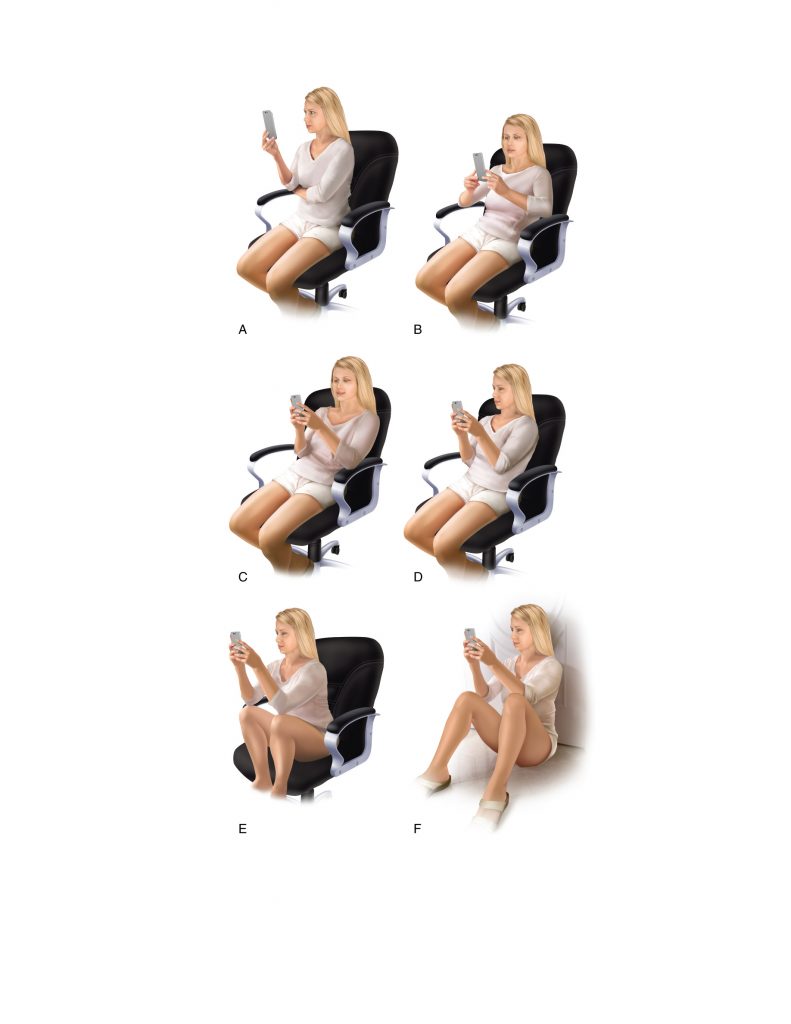
Permission Joseph E. Muscolino.
The introduction of any new technology often comes with unexpected consequences. This is certainly true with widespread use of the smart phone (cell phone, mobile phone). Although it is a wonderful marvel of communication that allows us to be connected with our loved ones, friends, and business colleagues, as well as connect us to the internet and therefore the world around us, unfortunately it comes at a price. That price is the physical stress that it can place on our body. One only needs to go to a public place and observe others while using their smart phones. The odds are that we will see many dysfunctional postural patterns and future injuries in the making. However, most of these conditions can be avoided if we pay attention to our biomechanics as we hold and use the smart phone.
As therapists, it is important to be aware of these common conditions so that we can be prepared to assess for them, and if found, provide the appropriate clinical orthopedic work to ameliorate the condition. Being aware of these potential problems also arms us with the knowledge needed to be able to offer the client valuable postural advice about how to properly hold and use the smart phone so that the development of these problems can be avoided.
Following are ten of the most common dysfunctional postural patterns and injuries that may occur with smart phone use. Some of these conditions are purely postural and can be avoided by improving the posture that is employed when using a smart phone. Other conditions may better be described as repetitive overuse conditions. These conditions are therefore less posture related and more due to the chronic repetitive use of smart phones. However, even with repetitive overuse conditions, improving smart phone posture can help to minimize or avoid their onset. For these reasons, some suggested postures for smart phone use are offered at the end of this article.
Golfer’s Elbow
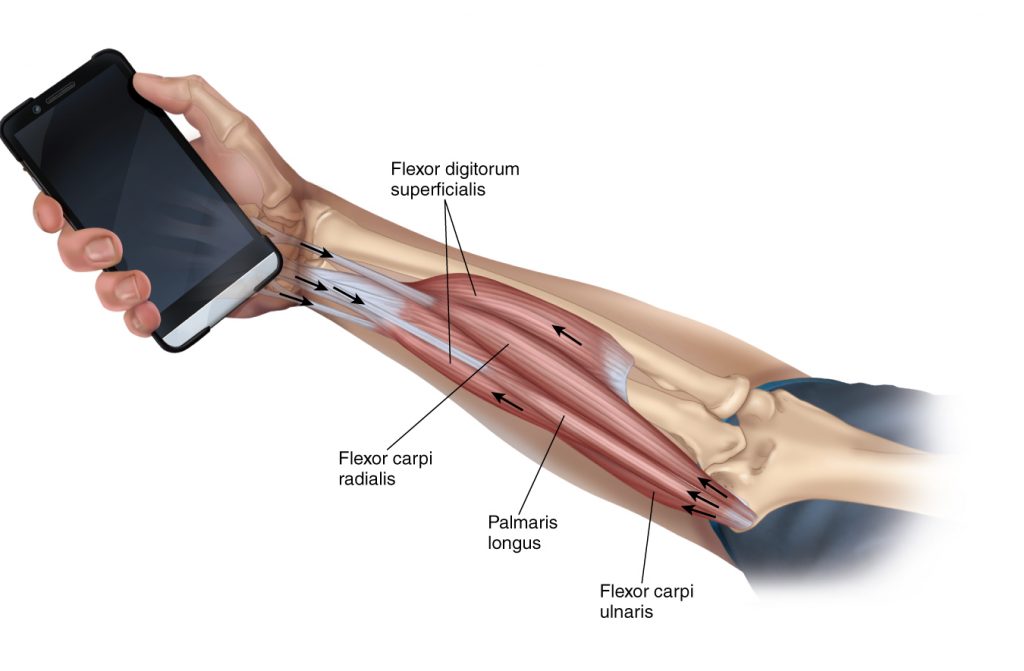
Figure 1. Prolonged holding of a smart phone can lead to overuse, fatigue, and dysfunction of the common flexor tendon. This condition is known as golfer’s elbow. Permission Joseph E. Muscolino
Golfer’s elbow, also known as medial epicondylitis or medial epicondylosis, is a condition in which inflammation and/or degeneration of the common flexor tendon occurs, usually accompanied by hypertonicity of the bellies of the associated muscles. This condition is caused by overuse of the muscles of the common flexor tendon that attaches to the medial epicondyle of the humerus. These muscles are the three muscles of the wrist flexor group (flexor carpi radialis, palmaris longus, and flexor carpi ulnaris), the pronator teres, and the flexor digitorum superficialis. As a whole, these muscles do flexion of the wrist joint and the fingers; in other words, the joint actions necessary to grip and hold any object including a smart phone (Figure 1). Holding the smart phone occasionally for a few minutes at a time is not a problem. The problem occurs with overuse that requires prolonged isometric contraction of the associated musculature, leading to fatigue and eventual injury/dysfunction of the common flexor tendon. The development of this condition is accelerated if the client grips the smart phone harder than necessary, thereby increasing the contraction strength and therefore stress upon the musculature and its common tendon.

Figure 2. Prolonged holding of a smart phone can lead to overuse, fatigue, and dysfunction of the common extensor tendon. This condition is known as tennis elbow. Permission Joseph E. Muscolino. Modeled from a figure by Don Neumann. Kinesiology of the Musculoskeletal System, 2ed. (Elsevier)
Tennis Elbow
Tennis elbow, also known as lateral epicondylitis or lateral epicondylosis, is a condition in which inflammation and/or degeneration of the common extensor tendon occurs, usually accompanied by hypertonicity of the bellies of the associated muscles. This condition is caused by overuse of the muscles of the common extensor tendon that attaches to the lateral epicondyle of the humerus. These muscles are the extensor carpi radialis brevis, extensor digitorum, extensor digiti minimi, and the extensor carpi ulnaris. As a group, these muscles do extension of the wrist joint and the fingers. It would seem that these muscles do not need to contract when gripping and holding a smart phone because this activity requires contraction by flexion musculature, not extensor musculature. However, extensor musculature is needed to contract isometrically to stabilize the wrist joint and prevent it from flexing when the flexors digitorum superficialis and profundus muscles contract to flex the fingers. Most often, it is the extensor carpi radialis brevis that engages in this scenario (Figure 2). Therefore, holding a smart phone does physically stress musculature of the common extensor tendon and can contribute to tennis elbow. Occasional use is not a problem; like golfer’s elbow, tennis elbow is an overuse condition. Gripping the phone more forcefully than necessary will also increase the stress to the extensor musculature and therefore the likelihood that this condition will develop.
Uptight Shoulders
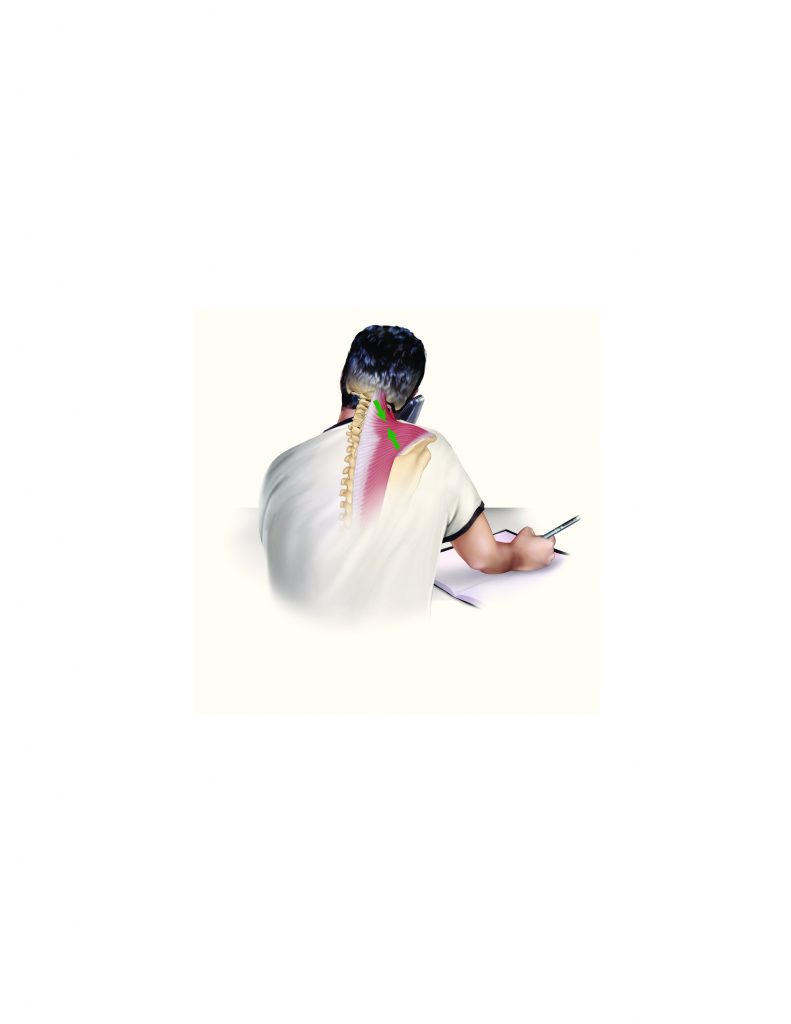
Figure 3. Crimping a smart phone between the shoulder and ear physically stresses muscles of scapular elevation.
Developing “uptight” elevated shoulders with a smart phone occurs when the phone is crimped (compressed) between the ear and shoulder, because this posture requires contraction of scapular elevation musculature to bring the shoulder up to hold the phone against the ear (Figure 3). Muscles of scapular elevation that are used/overused and likely to become fatigued, tight, and injured are the upper trapezius and levator scapulae. Crimping a phone also requires contraction of same-side lateral flexion musculature of the neck to help press the ear downward against the phone and shoulder. This further requires contraction of, and therefore physically stresses, the upper trapezius and levator scapulae, as well as other muscles of lateral flexion. This problem is not new with smart phones. It was and still is common for people to crimp landline phones too. However, because smart phones are much smaller, the amount of muscular effort necessary to crimp a smart phone is greater than to crimp a landline phone.

Figure 4. Holding the phone out in front of the body can overly stress, fatigue, and injure musculature of the anterior shoulder. Permission Joseph E. Muscolino.
Anterior Shoulder Strain
It is common for people using a smart phone to hold the phone in the air out in front of their body. The difficulty with this posture is that it requires isometric contraction of the musculature of humeral flexion at the glenohumeral joint to hold the arm out in the air. Foremost among these muscles is the anterior deltoid (Figure 4). Holding the arm out in flexion also requires stabilization of the scapula, which requires contraction of and therefore stress to the upper trapezius. And if the person also adds in elevation of the shoulder girdle to hold the phone up higher, it places even greater stress on the upper trapezius, as well as the levator scapulae. Therefore, excessive engagement of this posture can lead to anterior deltoid strain as well as strain of the upper trapezius and levator scapulae.

Figure 5. Holding the arm out in front of the body can also physically stress, fatigue, and injure musculature of the rotator cuff group. Permission Joseph E. Muscolino.
Rotator Cuff Strain/Tendinitis
Holding a phone out in front of the body with humeral flexion can also stress and injure the rotator cuff musculature. Whenever the arm is lifted upward in the air, whether it is up into flexion, extension, abduction, or adduction, it is necessary for the rotator cuff musculature to contract to stabilize and hold the (proximal) head of the humerus down into the glenoid fossa as the distal end of the humerus raises (Figure 5). Overuse of this posture can, over time, contribute to fatigue, tightening, and strain of the rotator cuff musculature, as well as tendinitis of the rotator cuff muscles.
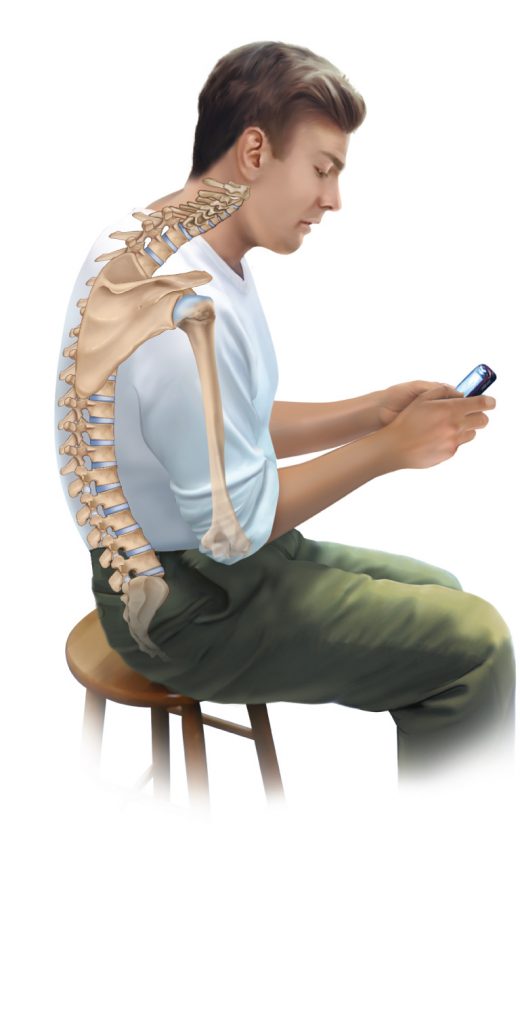
Figure 6. Holding the smart phone down low in front predisposes the client to rounded shoulders characterized by protracted scapulae and medially rotated humeri, as well as rounded upper back, forward head, and rounded lower back. Permission Joseph E. Muscolino.
Rounded Shoulders
Rounded shoulders is a postural distortion pattern in which the scapulae are protracted and the humeri are medially rotated. Therefore the shoulder girdles and arms are rounded in, hence the name. The client with rounded shoulders has scapular protractors (pectoralis minor and major) and humeral medial rotators (subscapularis, pectoralis major and teres major) that are locked short and tight, accompanied by scapular retractors (middle and lower trapezius and rhomboids) and humeral lateral rotators (teres minor and infraspinatus) that are weak and also likely locked long and tight. Using a smart phone often predisposes the client to this condition because so many people hold the smart phone down low in front of them (Figure 6). As with other overuse conditions, occasional rounded posture with a smart phone is not detrimental, but when this posture is assumed for long periods of time, the effects can become very chronic and severe.
Rounded Upper Back
Rounded upper back is defined as hyperkyphosis of the thoracic spine and almost always accompanies rounded shoulders. As the client’s shoulder girdles and arms round and collapse forward and down, their thoracic spine also rounds and collapses into flexion, in other words, hyperkyphosis. As with rounded shoulders, rounded upper back is caused and/or exacerbated by prolonged use of the smart phone down in front of the body (see Figure 6).

Figure 7. Forward head posture results in the center of weight of the head being anterior to the trunk. This imbalance is compensated for by constant contraction of the posterior cervical extensor musculature. Permission Joseph E. Muscolino.
Forward Head
Also accompanying rounded shoulder girdles and rounded upper back is forward head. When the thoracic spine is hyperkyphotic, the neck naturally projects forward with a hypolordotic lower cervical spine. The upper cervical spine then becomes hyperlordotic as a compensation to bring the eyes and ears back to level (see Figure 6). The posture of the head ends up being forward (protracted) with its center of weight anterior to the trunk and imbalanced over thin air; therefore, it should fall with gravity into flexion until the chin hits the chest. The only reason it does not is that the posterior cervical extensor musculature isometrically contracts to hold the head in this postural distortion pattern against the flexion force of gravity (Figure 7). Due to the prolonged isometric contraction of the posterior cervical musculature, it often fatigues, tightens, and becomes strained/injured and painful. Long-term chronic tightness of this musculature can also cause a tension pulling force (enthesopathy) upon its cranial attachments on the scalp, possibly resulting in tension headaches.
Note: Center of Weight of the Head
Having the center of weight of the head forward of the trunk requires constant isometric contraction of the posterior cervical extensor musculature. How forceful the posterior cervical musculature must work is dependent upon the leverage force of the weight of the head. The average head weighs approximately 10-12 pounds. However, as the head and neck are further flexed, the center of weight of the head moves increasingly anterior, increasing the leverage force of the weight of the head against which the cervical extensor musculature must work. It has been estimated that when the neck is flexed to 45 degrees, the head weighs the equivalent of 45 pounds. And if the neck is flexed 60 degrees, the head weighs the equivalent of 60 pounds!
Note: Upper Crossed Syndrome

Upper Crossed Syndrome (& Lower Crossed Syndrome). Permission Joseph E. Muscolino. Kinesiology: The Skeletal System and Muscle Function, 3rd. 2017 (Elsevier)
The sum postural distortion pattern of rounded shoulders along with rounded upper back and forward head is often termed as the upper crossed syndrome. This name is used to describe the characteristic crossed pattern of overly facilitated / tight / locked short muscles with the overly inhibited / weak / locked long muscles.
Rounded Lower Back
Rounded lower back is becoming increasingly common as a postural distortion pattern. It involves excessive posterior tilt of the pelvis and either hypolordosis of the lumbar spine or an actual reversal of the lumbar spine into kyphosis. This condition is caused by collapsing the entire trunk forward, and in the context of smart phone use, occurs when using the smart phone down low in front of the body, often in the lap. Over time, the assumption of this posture, as with all chronic postures, will result in locked short and locked long musculature, as well as fascial adhesions that will effectively “glue” the tissues to become stuck in this posture. The collapsed posture of rounded lower back usually couples with the collapsed postures of rounded upper back and rounded shoulders, as well as forward head posture (see Figure 6).
Note: Locked Short and Locked Long
There is an old saying that goes “There is no such thing as a bad posture, as long as you don’t get stuck in it.” This describes the idea that functionally being able to move in and out of any posture is fine. However, when a person continually/chronically assumes the same posture, the body’s tissues do tend to get stuck in it. Getting stuck can involve increased muscle baseline tone via the sliding filament mechanism (termed adaptive shortening) as well as the formation of fascial adhesions. With any given posture, the myofascial soft tissues on one side of the joint are shortened and the myofascial soft tissues on the other side of the joint are lengthened. Therefore, we can describe the tissues on the short side of the posture as locked short, and the tissues on the long side as locked long. And because the length tension relationship curve (that describes the strength of a muscle at its various lengths) shows that both shorter and longer muscles tend to become weaker, the result is that we have tight and weak muscles on both sides of the joint, regardless of whether they are short or long.
Texting Thumb
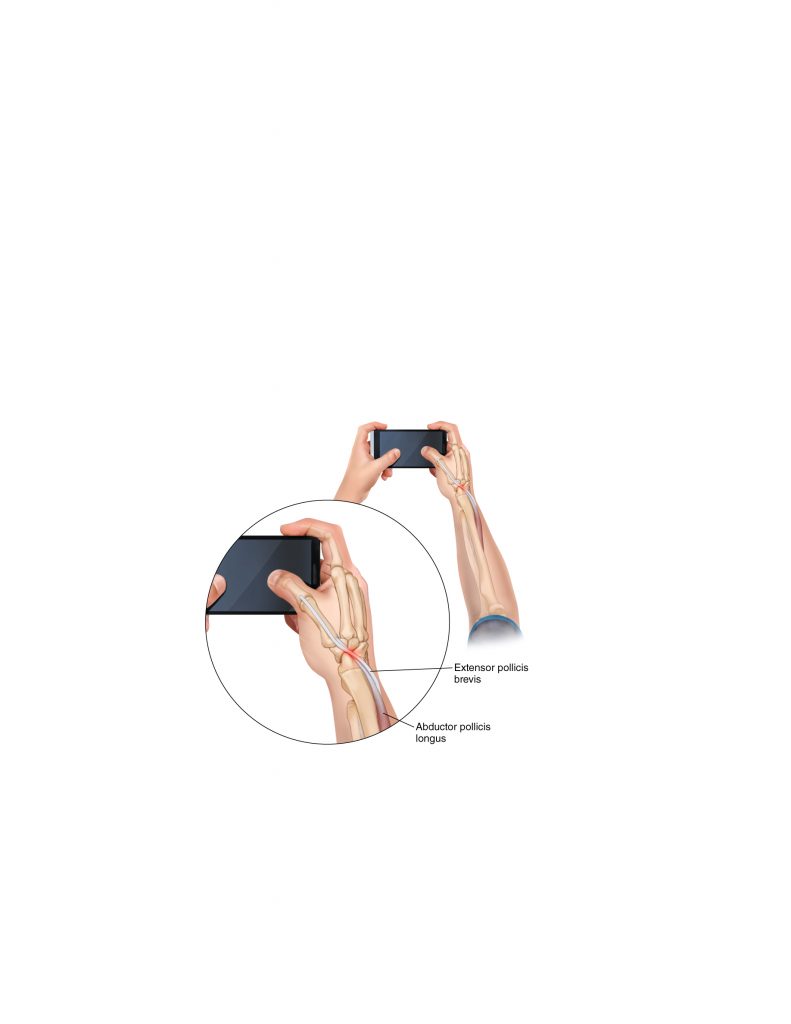
Figure 8. Texting thumb often involves overuse and injury to the tendons of the abductor pollicis longus and extensor pollicis brevis. Permission Joseph E. Muscolino.
Texting thumb is the name given to irritation/inflammation/injury to the tendons of the thumb due to repetitive overuse when texting or otherwise using a smart phone. The strain to the thumb comes less from the pressing of the thumb against the phone that it does from the traveling of the thumb that is necessary to move from one area of the screen to another; although pressing harder would add to the physical stress. The muscles of the thumb can be divided into intrinsic and extrinsic groups. Intrinsic thumb muscles are wholly located within the hand; in other words they originate within the hand and insert onto the thumb. Extrinsic thumb muscles have their proximal attachment (origin) in the arm or forearm and then attach onto the thumb. The intrinsic thumb muscles are the abductor pollicis brevis, flexor pollicis brevis, opponens pollicis (all of the thenar group), and the adductor pollicis. The extrinsic muscles are the flexor pollicis longus, abductor pollicis longus, extensor pollicis brevis, and extensor pollicis longus.
Although the tendons of any of the muscles of the thumb can be involved, the tendons, or more precisely the synovial sheathes of the tendons, of the abductor pollicis longus and extensor pollicis brevis are most commonly involved because the use of these muscles causes their tendons to rub against the styloid process of the radius (Figure 8). Tenosynovitis of these tendons is also known as de Quervain’s disease (or de Quervain’s stenosing tenosynovitis).
Suggested Smart Phone Postures
Following are a few tips for posture when using a smart phone. Certainly, any static posture that is assumed for prolonged periods of time, even an ideal posture, can result in stiffness and excessive stress to the body. For this reason, it is wise to take a break from your smart phone every few minutes so that you can move and change your posture.

Figure 9. Suggested postures for smart phone use. Permission Joseph E. Muscolino.
Tips for Smart Phone Posture
- Try to work with the phone at, or as close to eye level as possible; but it is important for your arm(s) to be supported (Figure 9A).
- If present, perhaps you can lean your elbows on an armrest to support your arms. This might not quite bring the phone to eye level, but it will allow both hands to be free when writing/typing (Figure 9B).
- Alternately, one elbow can be supported on an armrest with the other arm supported by your trunk. This will allow the phone to be held slightly higher and closer to eye level, but may cause you to lean your trunk toward the side of the armrest (Figure 9C).
- If no armrest is present, then try to support your arms against your trunk (Figure 9D). This might slightly round the shoulders, but it does support the arms and it brings the phone up higher.
- If one forearm can be held across your abdomen, then the other elbow can rest on it and this will bring the smart phone even higher and up to eye level. This is the best posture for your upper body. But because only one hand is free, this posture might not be best when typing but is recommended when reading (see Figure 9A).
- Alternately, your elbows can be supported on your knees (Figures 9D and E).
- Hold the phone gently.
- When typing, tap the phone lightly.
This blog post article is modeled on an article that was originally published in Spring 2015 issue of the AMTA’s massage therapy journal.
(Click here for a blog post article on Reading, Writing, and Posture.)
(Click here for a blog post article on the Seven Keys to Healthy Neck Posture.)
Note: All artwork by Giovanni Rimasti.


